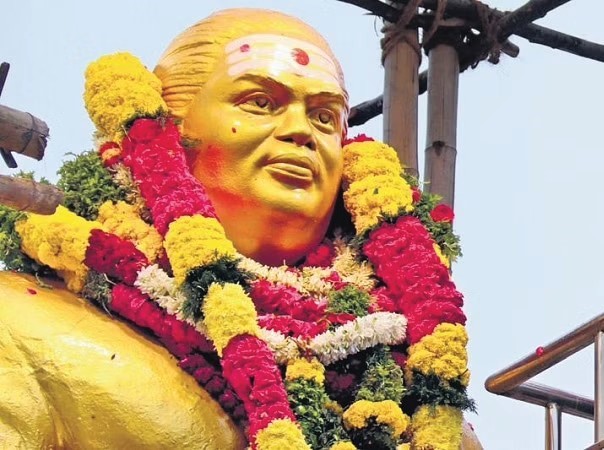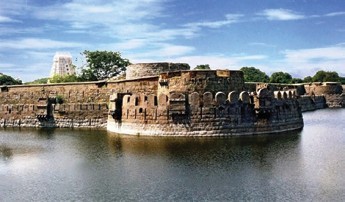The first South Indian to rebel against the British rule, Puli Thevar, fought between the 1750s and 1760s. He among scores of other freedom fighters from the Thevar commnity have now been finding their true place in history. It was only recently in 2016 that a documentary, commemorating the efforts of freedom fighters belonging to the Thevar community, was released on the 15th anniversary of the Marathiya Manila Thevar Munnetra Peravai, an association of the community in Mumbai.
The 20-minute documentary ‘Contributions of the Thevar Community to the Indian Freedom Movement’ gives a glimpse of the role the community played in the freedom struggle. At the function held at Shanmukhananda auditorium in Mumbai, the contributions of five Thevar freedom fighters were commemorated in the presence of over 2,500 members from the community.
Ramnad and Ramanathapuram
The princess of Ramanathapuram and the only child of the royal family of the Ramnad Kingdom, Velu Nachiyar was trained in many methods of combat, including war match weapons usage, martial arts like Valari, Silambam, horse riding, and archery. She was a scholar in many languages and proficient in languages like French, English and Urdu. She married Muthu Vaduganatha Periyavudaya Thevar of Sivagangai, with whom she had a daughter.
However, when her husband, Muthu was killed in a battle with East India Company in 1780 following his refusal to pay taxes, she ran away from Sivagangai as a fugitive and sought the help of Hyder Ali. After initially refusing to help her, Hyder Ali went on to provide her 5,000 soldiers and gunpowder weapons. Velu Nachiyar also sought the help of rich merchants as well. And, after eight years of planning along with support of many feudal lords, Tipu Sultan, Marudhu brothers and Thandavarayan Pillai she fought against the British East India Company. Velu Nachiyar found the place where the East India Company stored their ammunition and her commander Kuyili made a suicide attack on the ammunition depot and blew it up. Nachiyar went on to reinherit the kingdom of her husband, and ruled it for ten more years.
In 1790, she was succeeded by her daughter Vellacci. She granted powers to her daughter with the Marudu brothers to help with the administration of the kingdom. Velu Nachiyar died a few years later, on 25 December 1796.
South India’s contributions to history would be incomplete without mention of Maruthu Pandiyars – Periya and Chinna Maruthu, sons of Mookiah Palaniappan Servai, natives of Mukkulam, near Narikudi which was 18 miles away from Aruppukottai. Both the brothers were born at Mukkulam in the years 1748 and 1753 respectively. The first son was named as Vellai Marudhu alias Periya Marudhu and the second son as Chinna Marudhu. Following the reinheritance of the kingdom by Velu Nachiyar after an alliance of kingdoms led by the Pandiyar attacked Sivagangai and retook it in 1789, the Marudhu Pandiyars, planned to war against East India Company in India.
The Fort of Tiruputhur
They gave the protection to Oomaithurai Kumaraswamy seeking refuge from the chaos of war. Alongwith war leader Sivagangai and many of their family members, they were captured at Cholapuram and killed at Tiruppattur. They were hanged on 24 October 1801 in the fort of Tiruputhur that now falls in Sivaganga district, Tamil Nadu. The Maruthu Brothers were brilliant in aerodynamics and invented many variants of spears and Valari. They also founded guerilla war tactic in India during the early stages of colonisation. In October 2004, a commemorative postage stamp was released. Till date, every year people conduct Maruthu Pandiyars Guru Pooja at the Kalayarkovil temple, in October. Kalaiyarkoil was the seat of the kings from very early days. King Vengai Marban ruled over this area during Sangam period. It was the stronghold of rulers of Sivangangai. It was also the seat of the freedom fighters like Muthu Vatuka Natha Thevar and Maruthu brothers.
Very often, politicians are known to ‘pay respects’ at Madurai’s Perungamanallur pillar. The site commemorates 16 Kallars (a sub-group of the Thevars) gunned down by the British for protesting their status as a ‘criminal tribe’. The Perungamanallur massacre of 1920 is often referred to as ‘the Jallianwala Bagh of the south’. It was on 3 April 1916 that 16 persons from Piramalai Kallar community, including a woman, were shot dead and as many as 63 people tortured under detention for their opposition to the Criminal Tribes Act of 1911. The community was, in particular, objecting to the practice of registering the fingerprints of all the members as per the Act.
Revolt in Vellore
A revolt known as the Vellore Mutiny, or Vellore Revolution, occurred on 10 July 1806 and was the first instance of a large-scale and violent mutiny by Indian sepoys against the East India Company, predating the Indian Rebellion of 1857 by half a century. The full-day revolt took place in the South Indian city of Vellore, during which mutineers seized the Vellore Fort and killed or wounded 200 British troops. The mutiny was subdued by cavalry and artillery from Arcot. Total deaths amongst the mutineers were approximately 350; with summary executions of about 100 during the suppression of the outbreak, followed by
the formal court-martial of smaller numbers.
The mutiny was triggered by resentment felt towards changes in the sepoy dress code, introduced in November 1805. Hindus were prohibited from wearing religious marks on their foreheads while on duty and Muslims were required to shave their beards and trim their moustaches. In addition, they were ordered to wear a round hat resembling that associated at the time with both Europeans in general and with Indian converts to Christianity. These measures offended the sensibilities of both Hindu and Muslim sepoys and went contrary to an earlier warning by a military board that sepoy uniform changes should be “given every consideration which a subject of that delicate and important nature required”.
Situated at the head of the present-day state of Tamil Nadu, in the city of Vellore, the Vellore Fort was built in the 16th century CE under the Vijayanagara Empire. There have been two decisive political battles- the Battle of Talikota (1565) and the Battle of Toppur (1616-1617 CE) after which the fort became a site of contestation for the Bijapuri rulers, Marathas and British and the French till India gained independence. Historically known for the coup of 1614 CE and the famous ‘Vellore mutiny’, the political significance of this fort is complemented by its robust architecture.
A temple dedicated to Lord Shiva
Built in the Dravidian style of architecture, the Fort a deep wet ditch (moat) where around 10,000 crocodiles once swarmed. It has huge double walls with bastions, projecting irregularly, and ramparts on which two carts can be driven abreast. Resting on an unbroken mountain chain, this fort was constructed using granite sourced from the quarries of Arcot and Chittor. This fort complex exemplifies a secular past as it comprises a mosque, a church, called the St. John’s Church as well as a temple which has received considerable attention.
The Jalakanteshwarar Temple is dedicated to Lord Shiva and is famous for the exquisite carvings, large wooden gates and stunning monoliths. Apparently, Chinna Bommy Reddy, one of the builders of the fort, had a dream in which Lord Shiva asked him to build this temple at the given site. The site is said to have contained an ant-hill suspended in the middle of stagnant water. A wanderer is believed to have placed a Shiva lingam here which came to be highly revered. Jalakanteshwarar is translated as Lord Shiva residing in water.


